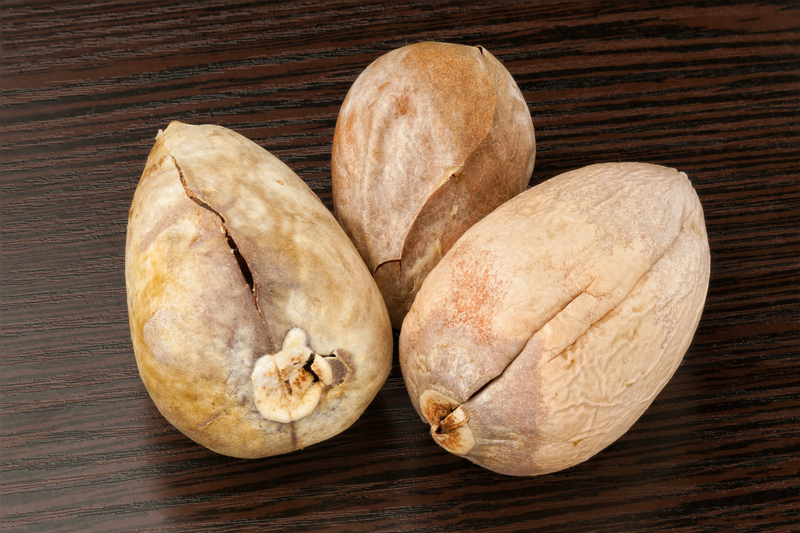The Future of Urban Horticulture: Container Gardening
Posted on 18/08/2025
The Future of Urban Horticulture: Container Gardening
Urban spaces are constantly evolving. As cities grow denser and green areas become ever more scarce, innovative solutions are emerging to reconnect people with nature and cultivate fresh food at home. Container gardening stands at the forefront of these innovations, offering a versatile, accessible, and sustainable method to bring plant life into the modern urban environment. In this comprehensive article, we explore the future of urban horticulture through the thriving lens of container gardening, uncovering its benefits, challenges, and transformative potential for city dwellers across the globe.
Understanding Container Gardening in Urban Settings
Container gardening is the practice of growing plants in pots, tubs, or other containers instead of the ground. This method allows urban residents with limited space--such as balconies, patios, rooftops, and even windowsills--to cultivate a wide variety of plants. As cities expand and land becomes a premium commodity, container-based horticulture presents a flexible, resource-efficient, and creative solution for urban greening.
The Rise of Container Horticulture: Why It Matters
- Space Optimization: City dwellers can maximize small living areas by creating vibrant green spaces.
- Food Security: Growing herbs, fruits, and vegetables in containers contributes to local food systems.
- Environmental Impact: Plants improve air quality, combat the urban heat island effect, and support biodiversity.
- Mental and Physical Wellbeing: Container gardening reduces stress, fosters mindfulness, and encourages physical activity.
- Community Engagement: Shared gardens promote neighborhood cohesion and collective action.
*As urbanization accelerates*, the importance of container gardening becomes even more pronounced. Its adaptability and accessibility democratize horticulture, making it possible for nearly anyone to participate in greening their environments.

The Growing Popularity of Urban Container Gardening
The popularity of container gardening in urban environments has skyrocketed over the past decade. Urbanites are increasingly drawn to its convenience and creativity:
- Millennials and Generation Z are driving the resurgence in houseplant ownership and home gardening, embracing sustainable living trends.
- Apartment dwellers with no backyard can still grow tomatoes, peppers, and fresh herbs on a sunny windowsill or small balcony.
- Rooftop and vertical gardens, often created using containers, are transforming unused spaces into food-producing, energy-saving oases.
According to recent studies, cities like New York, London, and Tokyo have seen a surge in rooftop market gardens, container-based school gardens, and pop-up plant shops. These trends highlight a shift in how urban populations engage with nature, food, and sustainability.
The Advantages of Container Gardening for Urbanites
- Allows for easy mobility and relocation of plants based on sunlight and seasonal changes.
- Reduces weed, pest, and soil contamination issues common in city soils.
- Requires less water and fertilizer, encouraging resource conservation.
- Facilitates experimentation with exotic and modular plant combinations.
- Encourages educational opportunities for children and adults alike in science, nutrition, and ecology.
Technological Innovations Shaping Urban Container Horticulture
The future of urban horticulture and container gardening is being shaped by cutting-edge technologies and inventive gardening systems. These advancements are making it easier, smarter, and more sustainable to cultivate plants in urban environments.
Smart Gardening Systems
- Self-watering planters and hydroponic containers ensure optimal plant hydration.
- Sensor-equipped pots monitor moisture, temperature, and nutrient levels, alerting gardeners via smartphone apps.
- Automated grow lights extend the growing season and enable cultivation in low-light apartments.
Vertical and Modular Container Gardens
- Wall-mounted planters and stackable containers save valuable floor space.
- Modular garden units make it easy to scale up or rearrange growing areas.
- Vertical gardening systems are transforming plain walls into lush, productive surfaces.
Upcycled and Eco-Friendly Containers
- Recycled materials, like plastic bottles, pallets, and old buckets, are repurposed as creative plant containers.
- Biodegradable and sustainable planter options reduce environmental impact.
These innovations are not only enhancing gardening experiences but also making urban horticulture with containers more inclusive and environmentally friendly.
Container Gardening Methods for the Modern Urbanite
There are countless ways to approach urban container gardening, with methods tailored to fit a variety of spaces, skills, and interests. In this section, we share practical ideas and best practices for maximizing your container garden's success.
1. Choosing the Right Containers
- Size matters: Match the plant to the container size for proper root development and moisture retention.
- Material: Use terracotta, ceramic, plastic, or eco-friendly biodegradable pots based on your climate and aesthetic.
- Drainage: Ensure every container has adequate drainage holes to prevent root rot.
2. Smart Soil Selection
- Choose high-quality, well-draining potting mixes enriched with compost or slow-release fertilizers.
- Add moisture-retaining amendments, such as coconut coir or vermiculite, to optimize watering needs.
3. Watering and Fertilization
- Use self-watering systems or ollas for busy urban gardeners.
- Maintain a consistent watering schedule--containers dry out quicker than in-ground gardens.
- Fertilize regularly to ensure healthy plant growth and abundant yields.
4. Top Plant Choices for City Container Gardens
- Edibles: Salad greens, cherry tomatoes, peppers, radishes, carrots, strawberries.
- Herbs: Basil, mint, rosemary, thyme, parsley, chives.
- Flowers: Petunias, impatiens, pansies, marigolds, begonias.
- Dwarf fruit trees: Lemons, figs, olives, apples.
5. Maximizing Sunlight and Space
- Install shelves or hang planters to optimize vertical space.
- Rotate containers as needed to guarantee even light exposure.
- Move portable containers outdoors: Place pots on rollable trays to chase the sun as it shifts during the day.
The Impact of Container Gardening on Urban Sustainability
Sustainability is a driving force behind the future of urban horticulture. Container gardening in cities offers a range of ecological, social, and economic benefits:
- Reduces food miles: Growing fresh food at home cuts down on transportation and packaging waste.
- Enhances urban biodiversity: Plants attract pollinators and create microhabitats for insects and birds.
- Improves microclimates: Container gardens help cool buildings and mitigate the urban heat island effect.
- Promotes sustainable living: Composting, upcycling, and rainwater harvesting integrate seamlessly with container gardening practices.
- Boosts local economies: Community nurseries and local plant shops foster urban entrepreneurship.
Educational institutions and urban planners are increasingly integrating container gardening into public spaces, schools, and healthcare facilities. These efforts not only green the city but also instill environmental stewardship among youth and adults alike.
Challenges and Solutions in Urban Container Gardening
While container horticulture offers many rewards, city-based gardeners also encounter unique challenges. Understanding and addressing these can ensure the future success and expansion of urban container gardening.
Space Constraints
Urban settings demand efficient use of every inch. Innovative solutions like vertical planters, hanging baskets, and tiered shelving help maximize limited areas.
Light and Air Quality
Tall buildings and smog reduce natural sunlight and fresh air. Grow lights, climate-adaptive plant selections, and air-purifying species can help overcome these hurdles.
Water Access and Drainage
Ensuring regular watering without over-saturating the soil is a delicate balance. Drip irrigation, mulch, and water-retaining potting mixes support efficient watering routines.
Community and Education
Not everyone is born with a "green thumb." Community workshops, online tutorials, and local gardening groups empower more city dwellers to embark on their container gardening journey.
The Role of Community in Advancing Urban Container Gardening
As the movement grows, urban gardening communities are forming both digitally and in person. Shared rooftops, balcony clubs, and neighborhood gardening collectives enhance the collective knowledge, resource sharing, and social bonds necessary for sustainable urban horticulture.
- Community gardens using containers can transform parking lots, vacant lots, and city squares into productive, beautiful gathering spaces.
- Seed swaps, plant sales, and gardening fairs nourish urban social life and diversity.
- Local authorities and nonprofits are increasingly supporting container gardening initiatives to address food insecurity and climate change resilience.
*The future of urban horticulture hinges on collaboration*, and container gardening is the perfect medium for city dwellers to connect, learn, and thrive together.

The Future of Urban Horticulture: Trends and Predictions
What does the future hold for urban container gardening? As technology and culture evolve, several exciting trends are emerging:
1. Smart and Automated Gardens
- Widespread adoption of IoT gardening devices for personalized plant care.
- Integration with smart homes--voice-controlled watering, automated lights, and climate monitoring.
2. Eco-Conscious Gardening Materials
- Greater use of biodegradable pots, organic soils, and low-impact fertilizers.
- Reusing greywater and harvesting rainwater for irrigation.
3. Urban Agriculture on a Grand Scale
- Large-scale rooftop and vertical farms using container-based hydroponics and aquaponics.
- Corporate and municipal support for edible landscapes and green roofs.
4. Education and Social Equity
- Expanding access to urban gardening resources in underserved communities.
- Including container gardening in school curricula and public outreach.
5. Personalization and Customization
- Designer planters, modular furniture, and artistic garden installations using containers.
- Custom plant pairings based on individual taste and local climate data.
As we look ahead, container gardening will remain a key driver of urban horticulture's evolution. Its flexibility, sustainability, and community-building power promise a greener, healthier, and more connected future for cities worldwide.
Conclusion: Embracing the Urban Green Revolution
The future of urban horticulture is in containers. As more people embrace city living and environmental consciousness, container gardening offers a pathway to lush, food-producing, therapeutic green spaces--even in the densest metropolises. Whether you are a seasoned green thumb or just starting out, the world of urban container gardening is ready for you to explore, innovate, and flourish.
Unlock the possibilities on your balcony, rooftop, or windowsill. Start small and dream big--the only limit is your imagination. In the dynamic landscape of cities, container gardening paves the way for resilient, sustainable, and beautiful urban environments for generations to come.

